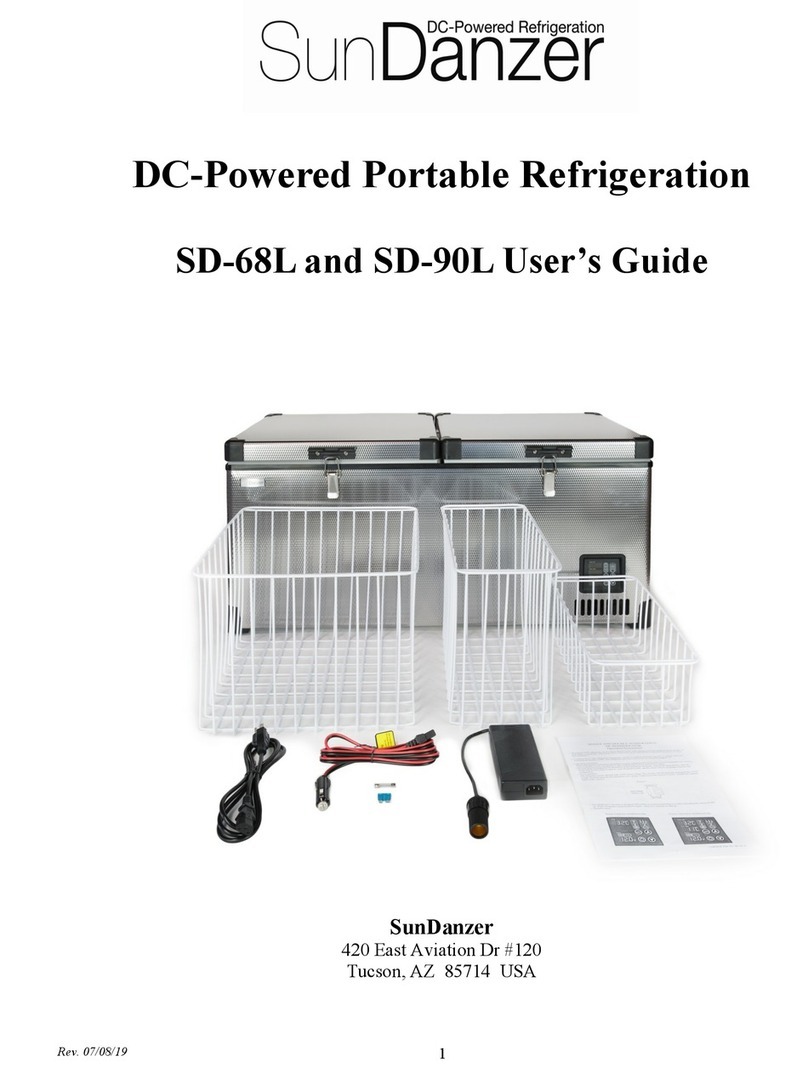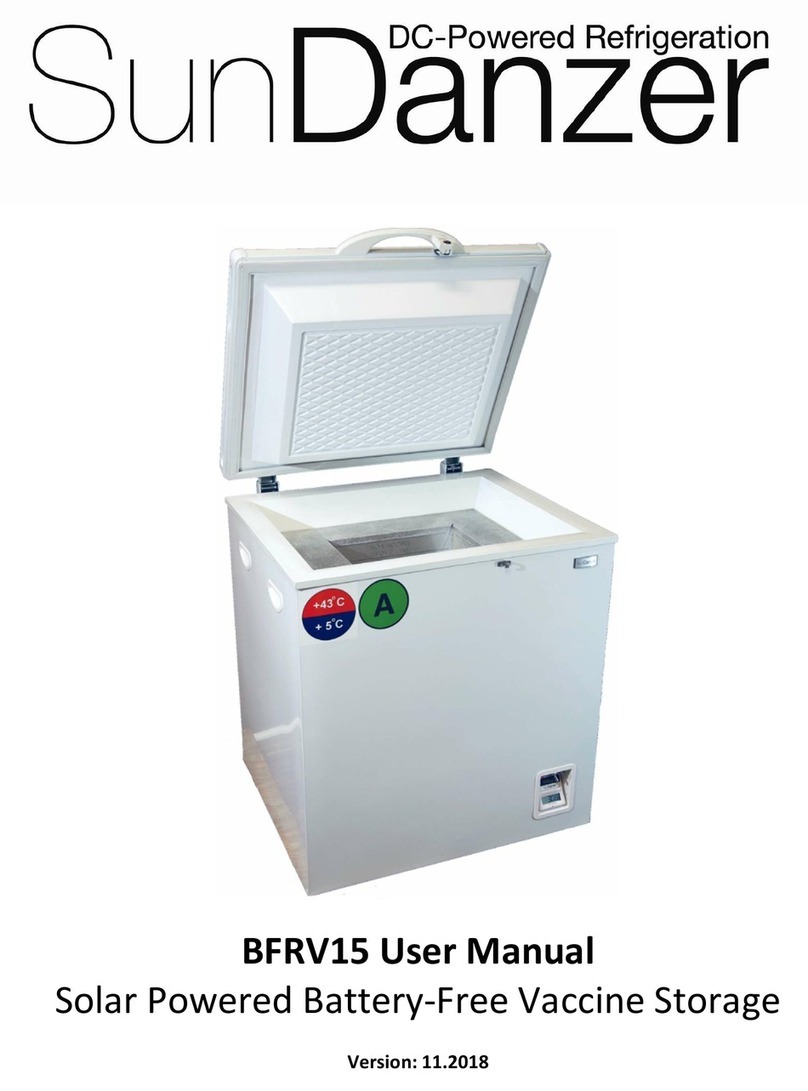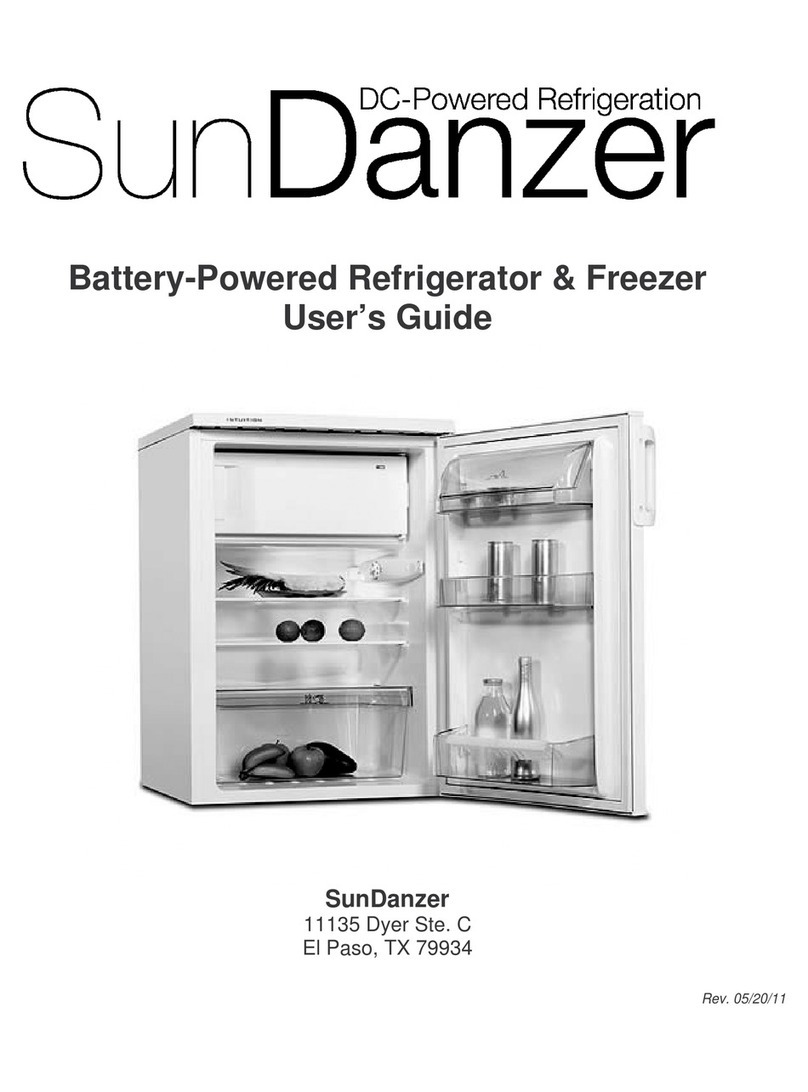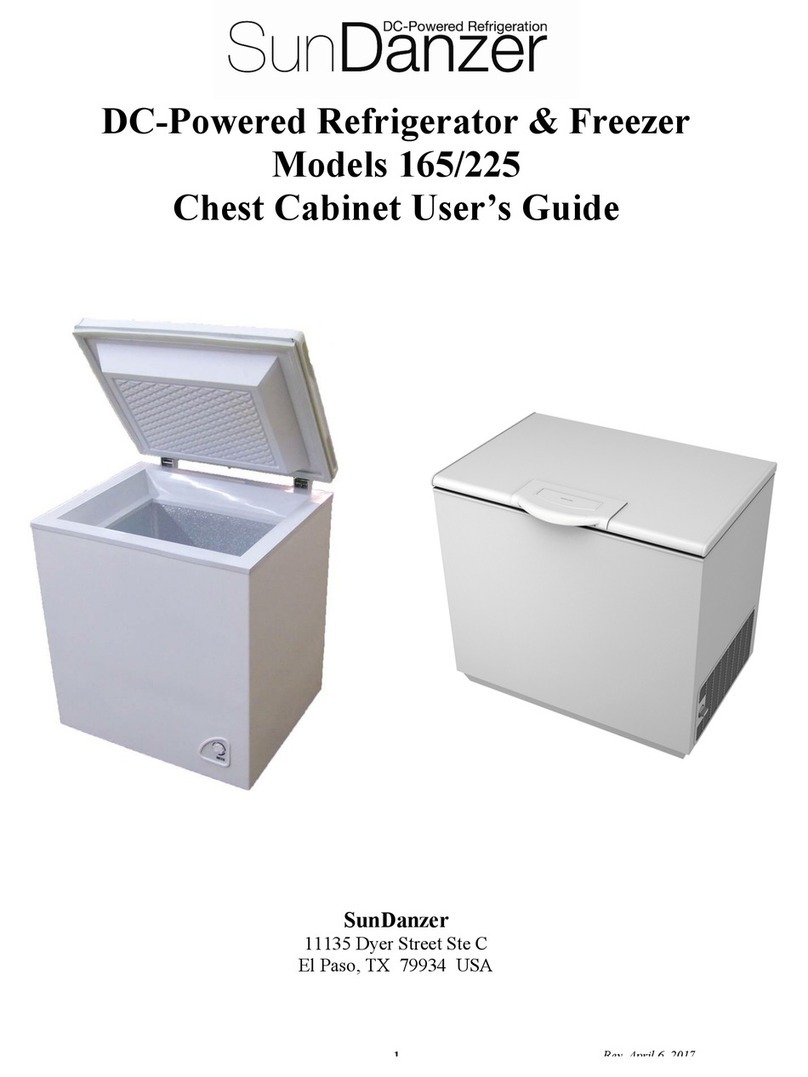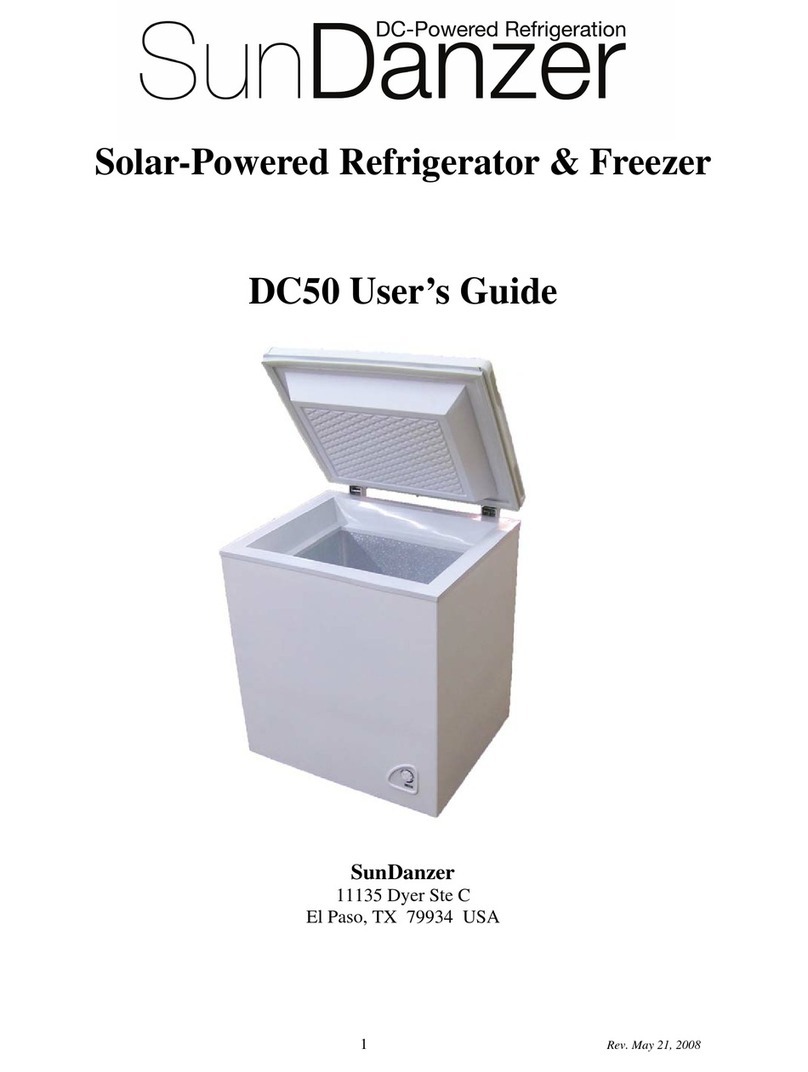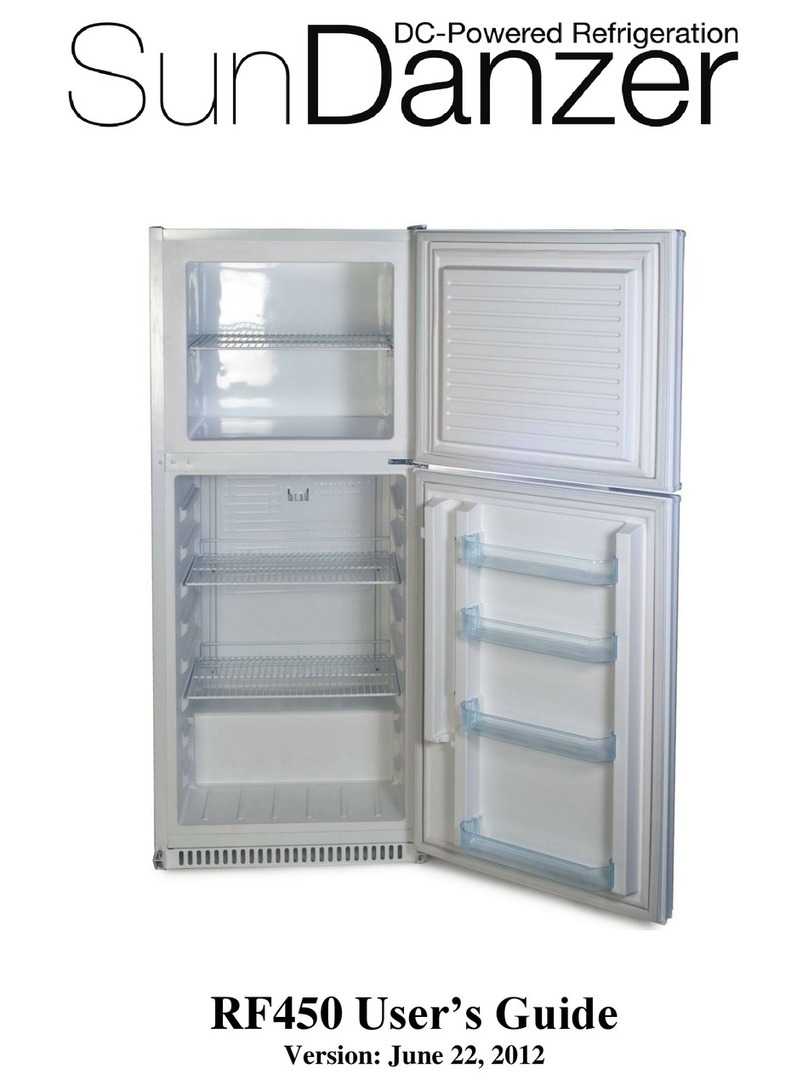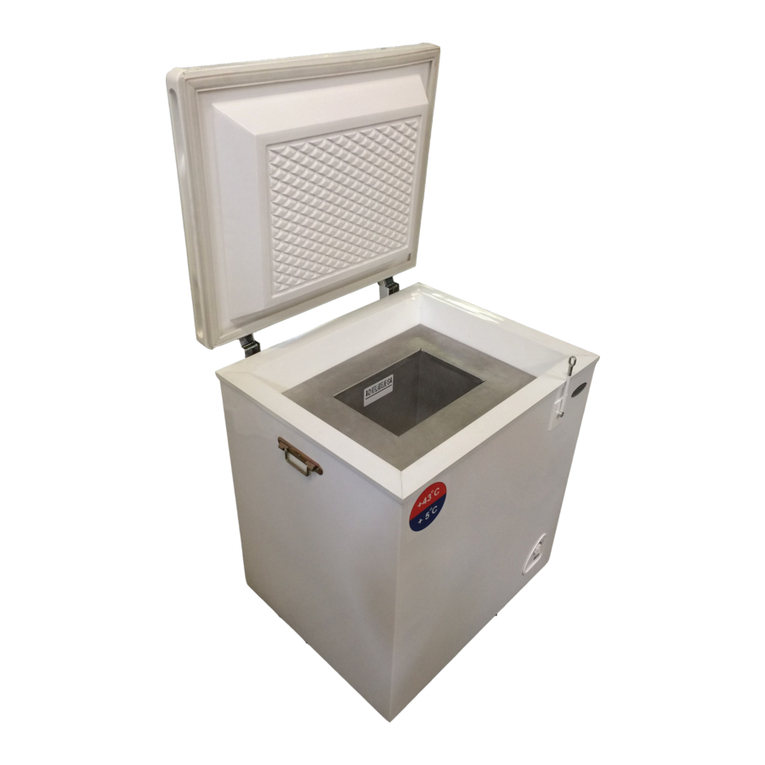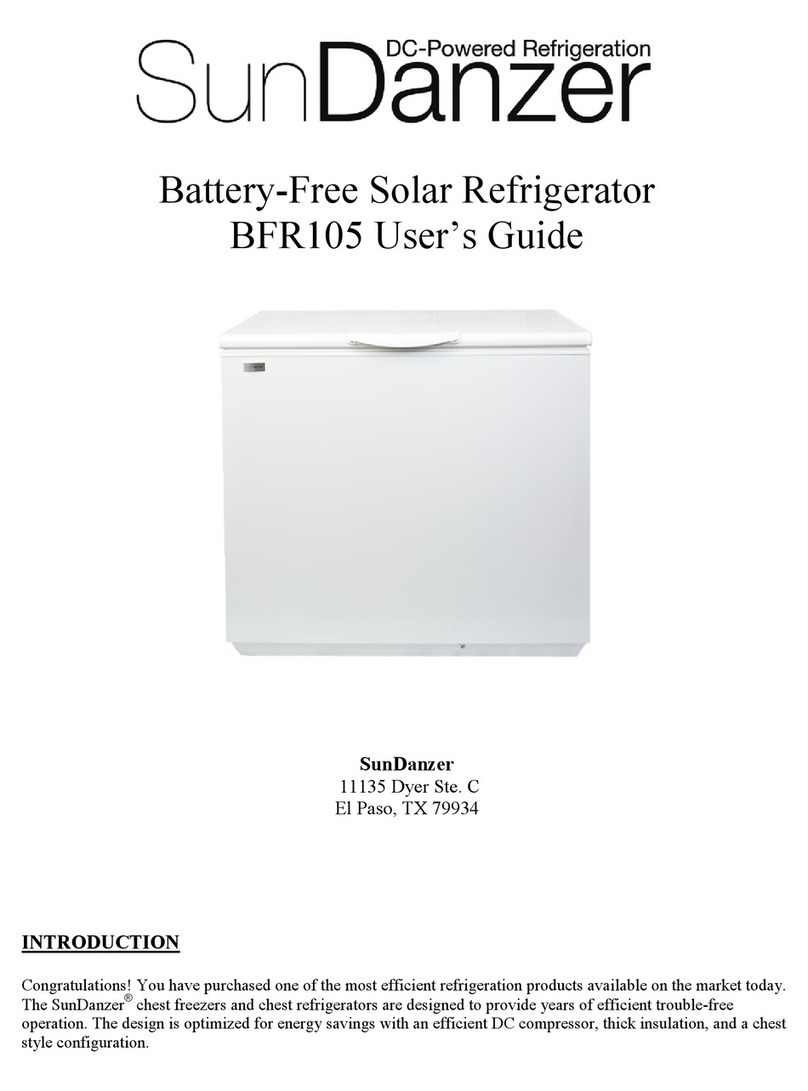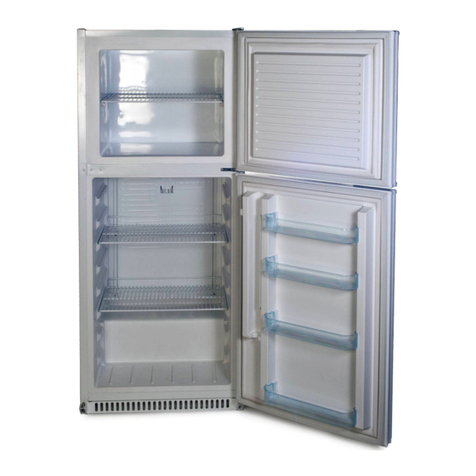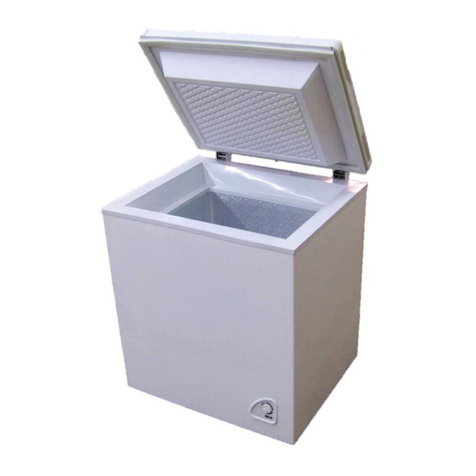INSTALLATION
Unpacking and Cleaning
Remove all packaging and securing tapes from the appliance. To avoid injury and causing damage to the appliance, be
extremely cautious when using sharp or pointed tools to complete this task. Keep children away from the packaging
material. DANGER OF SUFFOCATION! Wash the inside and outside of the appliance with luke warm water and a
mild soap or detergent. Abrasive or corrosive cleaning agents, steel wool, scouring sponges, or chemical cleaning
agents should not be used under any circumstances. A sponge, soft brush or towel is recommended. After cleaning,
thoroughly rinse and dry. You may want to leave the lid open allowing the compartment to ventilate for 20-30 minutes
to get rid of residual odors. Check with your local Environmental Agency for recommendations on recycling packaging
materials in your area.
Positioning
•IMPORTANT: The skin of the refrigerator is the condenser and will become warm when the compressor is
running. There should be adequate ventilation space between the refrigerator and neighboring walls. At least 3
inches (7.5 cm) is recommended.
•For best efficiency, place the refrigerator in a cool location and avoid prolonged direct sunlight on the
appliance.
•Level the refrigerator using the adjustable feet or wood shims if necessary. This is necessary for the thermostat
to function properly and for condensation to drain correctly.
•Always keep the air vent openings of the compressor housing cover (Lower right side or rear) free from dust
and obstructions.
Installing the door handle
Some models may ship without the door handle installed. If this is the case, the handle and mounting
hardware will be located inside the refrigerator.
Let oil settle
•The appliance should be left off for 30 minutes after positioning before it is turned on, to allow the refrigerant
oil to settle.
•If the appliance has been handled standing on its side or on end, it should be allowed to stand in the normal
operating position for 24 hours before turning it on.
ELECTRICAL DC CONNECTION
•The positive wire is colored Red or is black with a red stripe. The negative wire is black.
•THE APPLIANCE MUST BE CONNECTED TO A 12V OR 24 VDC POWER SOURCE ONLY, such
as a battery or charge controller. The unit will automatically operate on either 12 or 24 VDC. The user does
not need to make any adjustment.
•This unit will not operate directly from a PV solar module. Contact SunDAnzer if you prefer this option.
•THIS APPLIANCE MUST NEVER BE CONNECTED DIRECTLY TO ANY AC (Alternating Current)
POWER SOURCE!
•If the polarity is reversed, the unit will not be damaged, but will not run. If the unit is equipped with a
light, the light will operate even with reverse polarity
•Since there is no established standard DC plug, the power cord has simple ferrel terminations. The user
must provide a meaning of connection this wire to the power source. Using wire nuts, or adding a ring
or spade terminal is common.
•This connection should not become hot when the units is running. If it does, rework the connection to
insure better conductivity.
BEFORE SWITCHING ON, LET COMPRESSOR OIL SETTLE
•The appliance should be left off for 2 hours after positioning before it is turned on, in order to allow the
refrigerant oil to settle.
